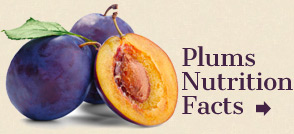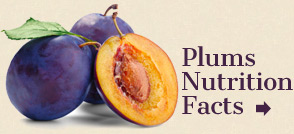Disease Management
Black Knot
Causal agent and host range
Black knot is a serious disease of most American, European, Japanese and wild plum. Black knotBlack Knot Disease will also infect peaches, nectarines, apricots, and tart cherries, but generally less severely than plum. Black knot is caused by the fungus Apiosporina morbosa (=Dibotryon morbosum) and affects only the woody parts of trees, primarily twigs and branches. In Michigan, strains of A. morbosa on sour cherry will not infect plum and vice versa although Ontario and New York have reported cross infection.
European plum tends to be more susceptible than Japanese plum to black knot, with considerable differences depending on the variety. Highly susceptible varieties include Stanley, Damson, Shropshire and Bluefre. Moderately susceptible varieties include Early Italian, Methley, Milton, Early Italian, Bradshaw and Fellenburg. Varieties slightly susceptible to black knot include Shire, Santa Rosa and Formosa, whereas President appears to be highly resistant. Limbs affected by black knot become girdled, progressively weaker and less productive. If the disease is allowed to progress unchecked on a susceptible host, black knot can spread to the whole tree in a few years, rendering it worthless.
Disease symptoms and life cycle
The disease is most recognizable as large, black, misshapen growths on branches. New infections appear as reddish green and brown swellings in the fall and spring, eventually becoming black. Black knot looks somewhat similar to crown gall (a bacterial disease), but swellings from black knot are generally located on branches rather than crown and roots. Black knot galls eventually turns black whereas crown gall stays brownish.
The fungus overwinters in symptomless infected wood and black knots. In the spring, beginning when the plum growth starts, spores (ascospores) in the black knots are spread by wind and rain. Under continued wet conditions and favorable mild temperatures infection will take place. Only tender green-bark plum shoots are susceptible to new infections. Infected plum limbs will eventually show swelling within 4 months of infection. On tart cherry, initial symptoms generally do not appear until the following year.
Management
To control black knot, careful pruning to remove knots is critical, at least twice per season and whenever knots are noticed. Cut knots and at least 5 inches symptomless limb below each knot. Remove knots from orchard and bury or burn. Knots on the orchard floor or nearby can be a source of air-borne spores for several years. Thorough flail mowing of pruned branches is preferable to rotary brush chopping, but is less effective than burying or burning. Check orchard boundaries for wild plums and cherries for knots and remove knots or entire trees. Once black knot is established in planting, aggressive pruning and fungicide applications are needed over several years to restore it to a disease-free status. Avoid planting new orchards next to orchards or wild plums with a significant black knot problem.
Several treatments with fungicides specific for black knot may be needed during active limb growth, especially if black knot symptoms have been detected within the last few years in or near the orchard.
Black knot infections are favored by temperatures from 55 to 77 F accompanied by rain. The entire time of tree susceptibility extends from first green buds until active growth slows down in early to mid-summer. The most important fungicide treatment time is from first color on flower buds to about three weeks after bloom when the combination of favorable temperatures, spore availability, and plum susceptibility coincide. Fungicide sprays help prevent new infections but will not stop infections that are already present on the tree.
Fungicides with protective activity against black knot include
Indar (good)
Pristine (good)
Bravo (active ingredient = chlorothalonil) (Good to excellent)
Topsin M 70 WP 1.5 lb or Topsin M 70 WP 1 lb + Captan 50 WP 2 lb (Good to excellent)
Captan 50 WP 6 lb (Fair).
Fungicides with lesser activity
Copper fungicides
Sulfur and sulfur containing fungicides at high rates have some activity.
Fungicides with little or no activity
Rovral, Vangard, and Orbit.
Ziram is not labeled on plums.
Brown Rot
Causal agent and host range
American brown rot, caused by the fungus Monilinia fruticola, is the most important disease of plum and other stone fruit in Michigan. Uncontrolled, brown rot can cause near complete crop loss under favorable weather conditions.
Strategies for brown rot control are relatively similar for plums, peaches, and cherries. European brown rot, caused by Monilinia laxa, is found on tart cherries in Michigan, especially European red juice types, but apparently not on plum. Brown rot of stone fruit (peach). Note brown brown sporulation and discolored foliage
Brown rot of stone fruit (peach). Note brown brown sporulation and discolored foliage
Brown rot disease symptoms and life cycle
The most common brown rot symptom is fruit rot with fluffy brown sporulation, but the fungus can also cause blossom and twig blight and gummy twig and branch cankers. Blossom blight is more difficult to diagnose if weather conditions are not favorable for production of the brown conidia.
The brown rot pathogen overwinters in mummified fruit and twig cankers. Warm and rainy conditions in the spring induce these to produce conidia which are spread by rain and wind to susceptible blossom and fruit. Rarely, mummies overwintering on the orchard floor will produce tiny inconspicuous fragile mushroom-like brown apothecia that puff spores (ascospores) during rain events. Wind carries the ascospores to susceptible tissue, starting the infection cycle.
The optimum temperature for infection is 68 to 77 F with wetting or high humidity. Infection requires at least 12 hrs of wetting/and high humidity at 60 F and 24 hrs at 50 F.
Blossom infection is somewhat rare except when warm weather and rain occurs during bloom. Infection of immature green fruit is more likely occur if brown rot spores are available and temperature and moisture is conducive, especially if the fruit have been injured/weakened by insects, frost, and poor pollination. Fruit become much more susceptible to infection as harvest approaches.
Infections that start in blossoms and fruit can spread to adjacent petioles, leaves and branches. Infected leaves can turn tan brown. Infected branches can be girdled, develop gum, and serve as a source of spores, and a site for overwintering.
Brown Rot Management
Remove old fruit mummies from the tree before growth starts in the spring. The number of brown sprays needed during bloom, green fruit stage, and as fruit begin to ripen depends on many factors. Protection of ripening fruit by multiple fungicide applications is definitely needed—one or two applications during bloom is typical. At least some protection of green fruit is generally needed.
Brown rot infected mummies, infected fruit and foliage in trees can result in abundant production of spores, overwhelming attempts to manage the disease with fungicides. Aggressive removal of brown rot infected material in trees is critical for disease management. Management of fruit-invading insects and discouraging fruit feeding birds helps to prevent spread of brown rot from fruit to fruit.
Brown rot can be a major problem in greenhouse and high tunnel production even with complete exclusion of rain. High humidity and dew in these settings are sufficient for the pathogen to thrive.
Harvest timing, sanitation during picking, and prompt post harvest temperature management is important to prevent brown rot and other rot problems. Post harvest fungicide dips or sprays specific for brown rot may be needed depending on the year, fruit condition, and intended market
The brown rot pathogen is prone to developing resistance to systemic fungicides with repeated use over multiple years. Benomyl and thiophanate-methyl resistant strains of brown rot are widespread in Michigan. Sterol biosynthesis fungicides such as Rally, Elite, Indar, and Orbit are systemic, as are the strobilurin fungicides such as Gem, Adament, Pristine, and Cabrio. Non-systemic fungicides such as Bravo/Echo (chlorothalonil), sulfur, and captan are generally not considered prone to resistance development. Refer to current local Extension information for advice on fungicide choice, timing, application methods, and other details about fungicide control of brown rot.




